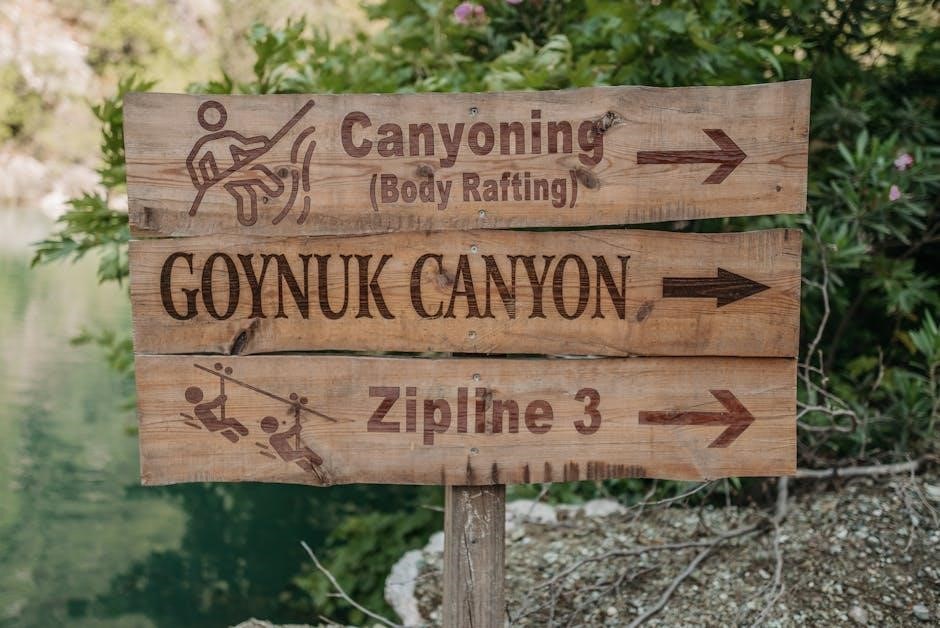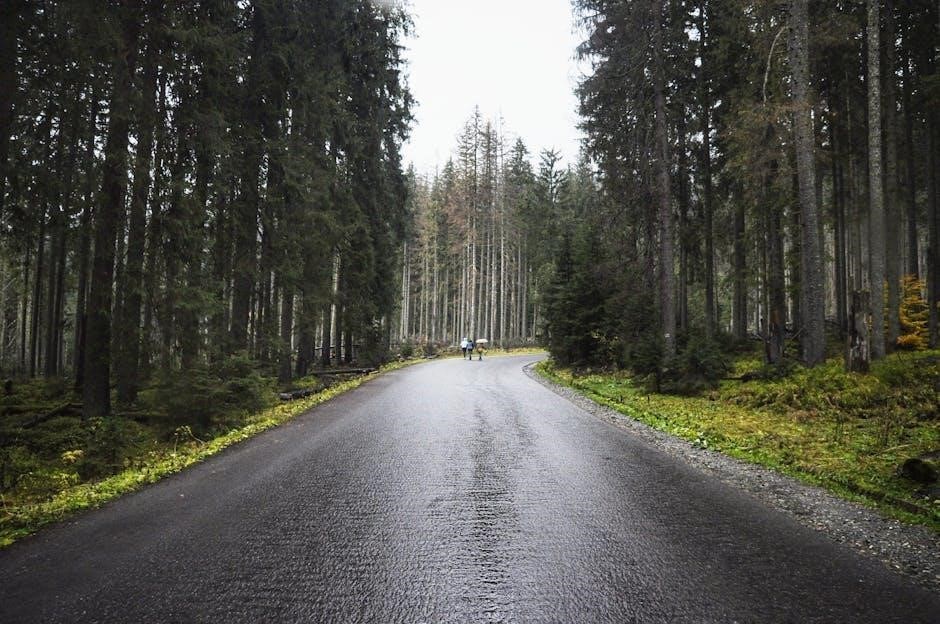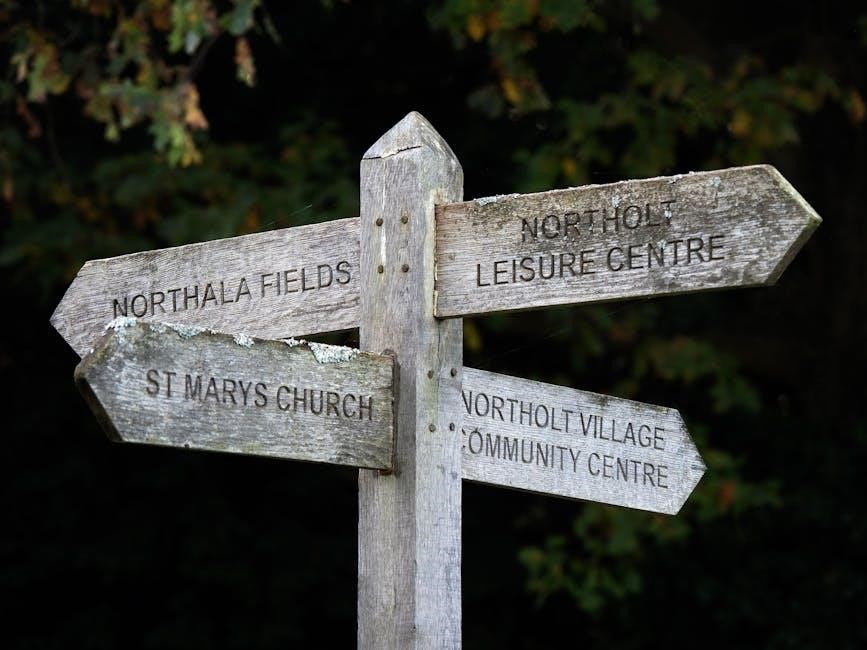The Subaru Forester is a reliable compact SUV known for its all-wheel-drive capability, spacious interior, and excellent fuel efficiency. Its durability and practical design make it a top choice for outdoor enthusiasts and families alike.
1.1 Overview of the Subaru Forester
The Subaru Forester is a compact SUV renowned for its reliability, Symmetrical All-Wheel Drive, and excellent fuel efficiency. With ample cargo space, high safety ratings, and advanced tech features, it meets the needs of outdoor enthusiasts, families, and commuters seeking versatility and performance in various driving conditions.
1.2 Why the Subaru Forester is a Popular Choice
The Subaru Forester’s popularity stems from its all-weather capability, robust safety features, and affordability. Its Symmetrical AWD ensures superior traction, while its spacious interior and fuel efficiency make it practical for daily use. Additionally, its reputation for durability and lower maintenance costs compared to competitors further enhances its appeal to a wide range of buyers.
1.3 Key Features of the Subaru Forester
The Subaru Forester offers a range of key features, including its standard Symmetrical All-Wheel Drive, a roomy interior with ample cargo space, and advanced safety technologies like EyeSight Driver Assist. Its fuel-efficient engine, intuitive infotainment system, and durable construction make it a versatile choice for both urban commuting and off-road adventures, ensuring a comfortable and secure driving experience.

Subaru Forester Model History and Evolution
The Subaru Forester debuted in 1997 as a compact SUV, evolving from a wagon-like design to a more robust, modern crossover. Over generations, it has embraced improved safety, technology, and performance, solidifying its reputation as a versatile and dependable vehicle for diverse driving needs.
2.1 A Brief History of the Subaru Forester
The Subaru Forester was introduced in 1997, emerging as a compact SUV with wagon-like styling. It quickly gained popularity for its all-wheel-drive system and practicality. Over the years, the Forester has evolved through five generations, with each iteration enhancing features like safety, fuel efficiency, and technology, while maintaining its core appeal as a versatile and reliable vehicle.
2.2 Major Redesigns and Updates Over the Years
The Subaru Forester underwent significant redesigns in 2002, 2008, 2014, and 2019. Each generation introduced improved safety features, enhanced interior space, and better fuel efficiency. The 2019 redesign brought advanced safety technology and a more robust engine. These updates have consistently refined the Forester, maintaining its reputation as a reliable and versatile compact SUV;
2.3 Reliability and Durability of the Subaru Forester
The Subaru Forester is renowned for its reliability and durability, backed by Subaru’s reputation for building long-lasting vehicles. While older models like the 2.5L engine may have issues with head gaskets, newer generations have addressed these concerns. Proper maintenance ensures longevity, and the Forester’s all-wheel-drive system is a testament to its rugged design and dependability over time.
Choosing the Right Subaru Forester for Your Needs
Choosing the right Subaru Forester involves considering your budget, lifestyle, and needs. Evaluate model years, mileage, and features to find the best fit for you. Research and test drives are essential to make an informed decision.
3.1 Factors to Consider When Buying a Subaru Forester
When buying a Subaru Forester, consider your budget, lifestyle, and needs. Assess model years, mileage, and vehicle condition. Check for reliability and maintenance costs. Test drive different trims to ensure the car fits your daily use or outdoor adventures. Prioritize all-wheel-drive for better traction and safety.
3.2 Understanding Different Model Years and Generations
Researching Subaru Forester model years and generations is crucial. The first generation (1997–2002) offered a compact design, while the second (2003–2008) improved space and comfort. The third (2009–2013) introduced a roomier interior, and the fourth (2014–2018) enhanced technology and safety. The fifth generation (2019–present) features modern updates and efficiency. Each generation brings unique upgrades, so choose based on your preferences for features and budget.
3.3 Importance of Mileage and Vehicle Condition
When buying a Subaru Forester, consider both mileage and vehicle condition. Lower mileage typically indicates better longevity, while higher mileage may reflect more wear. Check for consistent maintenance records to ensure reliability. A well-maintained Forester can last up to 200,000 miles or more. Prioritize vehicles with a clean history and fewer signs of wear for optimal performance and durability.
Subaru Forester Trim Levels and Options
The Subaru Forester offers a variety of trim levels, from the base model to the high-end Touring. Each trim provides unique features, allowing buyers to choose the perfect balance of functionality and luxury to suit their lifestyle and preferences.
4.1 Overview of Available Trim Levels
The Subaru Forester offers several trim levels, including Base, Premium, Sport, Limited, and Touring. Each trim level provides a unique set of features, ranging from basic amenities to advanced technology and luxury options. The Base model includes essential features, while higher trims add upgrades like leather upholstery, panoramic moonroofs, and state-of-the-art infotainment systems.
4.2 Standard and Optional Features by Trim
Each Subaru Forester trim comes with distinct features. The Base includes essentials like AWD and a touchscreen, while Premium adds heated seats and a moonroof. Sport offers unique styling, Limited adds leather, and Touring includes premium audio and adaptive cruise control. Optional packages enhance functionality and comfort, catering to diverse preferences and needs.
4.3 Customization Options for Your Subaru Forester
The Subaru Forester offers various customization options to tailor your vehicle to your preferences. From roof racks and cargo trays to all-weather mats, you can enhance functionality. Exterior styling elements like decals or spoilers and interior upgrades such as seat covers or dash trim can personalize your ride. Infotainment upgrades and performance modifications, like exhaust systems, also provide options to enhance your Forester’s capabilities and style.

Pricing and Budgeting for Your Subaru Forester
Pricing for the Subaru Forester varies based on model year, trim, and condition. The MSRP typically ranges from $25,000 to $35,000. Consider pre-owned options for lower costs and budget for additional expenses like insurance, maintenance, and potential repairs to ensure long-term affordability.
5.1 MSRP and Market Value of the Subaru Forester
The Subaru Forester’s MSRP typically ranges from $25,000 for base models to over $35,000 for higher trims. Market value varies by model year, mileage, and condition, with older models like 2004-2005 versions available for under $5,000. Researching current listings and understanding depreciation can help buyers negotiate better prices and make informed purchasing decisions.
5.2 Financing Options and Incentives
Subaru offers various financing options, including low-interest loans and lease deals. Incentives like cashback, low APR, or rebates are often available, especially for new models. Dealerships may provide additional promotions, and Subaru’s financing programs can help buyers secure affordable terms. Comparing offers from multiple lenders or dealerships can lead to the best financial arrangement for your Forester purchase.
5.3 Additional Costs to Consider Beyond the Purchase Price
Beyond the purchase price, consider maintenance, repairs, and fuel costs. Regular servicing, potential repairs, and higher fuel bills for older models can add up. Insurance premiums and possible aftermarket modifications should also be factored in. Budgeting for these extras ensures a more accurate financial plan and avoids surprises down the road.

Where to Buy Your Subaru Forester
Consider purchasing from a dealership for warranties and support, a private seller for potential savings, or explore Certified Pre-Owned options for a balanced choice.
6.1 Buying from a Dealership vs. Private Seller
Dealerships offer warranties, certified pre-owned options, and financing incentives, providing peace of mind. Private sellers may offer lower prices but lack dealer support and guarantees. Consider CPO programs for a balance of cost and reliability, and always inspect the vehicle thoroughly, regardless of the seller, to ensure a well-informed decision.
6.2 Certified Pre-Owned (CPO) Subaru Forester Options
CPO Subaru Forester models offer a smart balance of cost and reliability. These vehicles undergo rigorous inspections and come with extended warranties, providing peace of mind. CPO options often include additional perks like roadside assistance and may qualify for special financing incentives, making them a compelling choice for buyers seeking value and dependability.
6.3 Tips for Negotiating the Best Price
Research the market value of your desired Subaru Forester to set a realistic target price. Compare offers from multiple dealerships and consider incentives or discounts. Negotiate additional features like extended warranties or accessories. Be prepared to walk away if the deal doesn’t meet your expectations, ensuring you secure a fair and satisfactory price.
Test Driving and Inspecting a Subaru Forester
Test driving a Subaru Forester involves checking acceleration, handling, and braking. Inspect for rust, worn tires, and any signs of damage. Ensure all features function properly during the drive.
7.1 What to Look for During a Test Drive
During a Subaru Forester test drive, focus on smooth acceleration, responsive steering, and quiet cabin noise. Check for any unusual vibrations or noises, especially from the CVT if equipped. Ensure all-wheel-drive engages properly on uneven terrain and test braking performance for consistency. Also, verify all infotainment and safety features are functioning correctly.
7.2 Key Areas to Inspect on a Used Subaru Forester
Inspect the exterior for rust spots, especially under the doors and wheel wells. Check the tires for even wear and ensure they match. Look for signs of accidents or repairs in the body panels. Inside, test all electronics, including the infotainment system and heated seats. Check the engine for oil leaks and confirm the odometer matches maintenance records.
7.3 Red Flags to Watch Out for in a Pre-Owned Vehicle
Look for signs of excessive wear, such as uneven tire wear or cracked sidewalls. Check for rust on the undercarriage and body panels. Be cautious of oil leaks, high mileage, or a history of major repairs. Ensure all electronic features function properly and verify the vehicle’s maintenance records. Avoid models with unresolved recalls or a history of accidents.
Maintenance and Repair Considerations
Regular oil changes, tire rotations, and inspections are crucial. Address head gasket issues promptly and monitor oil consumption. Replace timing belts and wheel bearings as needed to prevent costly repairs.
8.1 Common Maintenance Needs for the Subaru Forester
Regular maintenance for the Subaru Forester includes oil changes every 5,000 to 7,500 miles, tire rotations, and inspections of brakes and belts. It’s important to monitor oil consumption and address any leaks promptly. Replacing the timing belt and water pump around 100,000 miles is also recommended to prevent engine damage. Additionally, check for signs of wear on wheel bearings and suspension components, as these are common areas for maintenance. Ensuring proper coolant levels and inspecting for any rust or corrosion, especially in regions with high humidity or salted roads, is crucial for longevity. Keeping up with these routine tasks helps maintain the vehicle’s reliability and performance over time. Regular servicing also helps in identifying potential issues early, which can save on costly repairs down the line. By staying proactive with maintenance, Subaru Forester owners can enjoy a smooth and trouble-free driving experience for years to come.
8.2 Potential Repairs and Their Costs
Common Subaru Forester repairs include head gasket replacements, which can cost between $1,000 to $3,000, and CVT transmission repairs, ranging from $2,000 to $4,000. Wheel bearings may need replacing every 50,000 to 80,000 miles, costing around $300 to $500 per hub. Oil leaks and excessive oil consumption issues are also prevalent, with repairs varying based on severity. Addressing these early can prevent more costly fixes down the road.
8.3 Importance of Regular Servicing
Regular servicing is crucial for maintaining the Subaru Forester’s performance and longevity. Routine oil changes, tire rotations, and inspections help prevent costly repairs. Adhering to the manufacturer’s maintenance schedule ensures optimal functionality, while addressing minor issues early can prevent major breakdowns. Consistent upkeep also enhances safety, fuel efficiency, and resale value, making it a wise investment for long-term ownership.

Accessories and Customization for Your Subaru Forester
Accessorizing your Subaru Forester enhances functionality and style. Popular options include roof racks, cargo trays, and weather packages. Customization allows owners to personalize their vehicle, ensuring it meets their lifestyle needs while maintaining its rugged appeal and versatility.
9.1 Popular Accessories for the Subaru Forester
Popular accessories for the Subaru Forester include roof racks for cargo, all-weather floor mats for protection, and bike racks for outdoor enthusiasts. Cargo trays and hitch installations are also favored for added utility. These accessories enhance functionality while maintaining the vehicle’s rugged appeal and versatility for various lifestyles and adventures.
9.2 Customization Ideas to Enhance Functionality and Style
Customize your Subaru Forester with roof racks for added cargo space or a suspension lift for improved ground clearance. Interior upgrades like premium dashboard trim and ambient lighting enhance style, while exterior mods such as decals or alloy wheels add a personal touch. Skid plates and off-road bumpers boost functionality for adventurous drivers.
9.3 Aftermarket Modifications and Their Impact on Warranty
Aftermarket modifications can enhance performance but may void your Subaru Forester’s warranty. The Magnuson-Moss Warranty Act protects against automatic voidance, but dealers can deny claims if mods cause damage. Engine tuning, suspension upgrades, or performance parts may risk warranty coverage. Always verify with Subaru or the dealership before making significant changes.
The Subaru Forester is a reliable choice for outdoor enthusiasts and families, offering durability and all-wheel-drive capability. Always prioritize test drives and regular maintenance for optimal ownership.
10.1 Summary of Key Considerations
When purchasing a Subaru Forester, prioritize reliability, fuel efficiency, and spaciousness. Consider model years, mileage, and trim levels to fit your budget. Always test drive and inspect for potential issues like head gaskets or oil consumption. Plan for regular maintenance to ensure longevity and performance, enhancing your overall ownership experience.
10.2 Final Tips for Subaru Forester Buyers
Research model years, check for common issues like head gaskets or oil consumption, and test drive thoroughly. Negotiate the best price, review service history, and consider Certified Pre-Owned options. Budget for maintenance and repairs, ensuring a thorough inspection. Prioritize reliability and durability to maximize your ownership experience and satisfaction with the Subaru Forester.
10.3 Making the Most of Your Subaru Forester Ownership
Regular maintenance is key to extending the life of your Subaru Forester. Address minor issues promptly to avoid costly repairs. Stay within budget by planning for routine services. Explore customization and accessories to enhance functionality and style. By prioritizing care and smart upgrades, you can maximize both the value and enjoyment of your Subaru Forester ownership experience.
